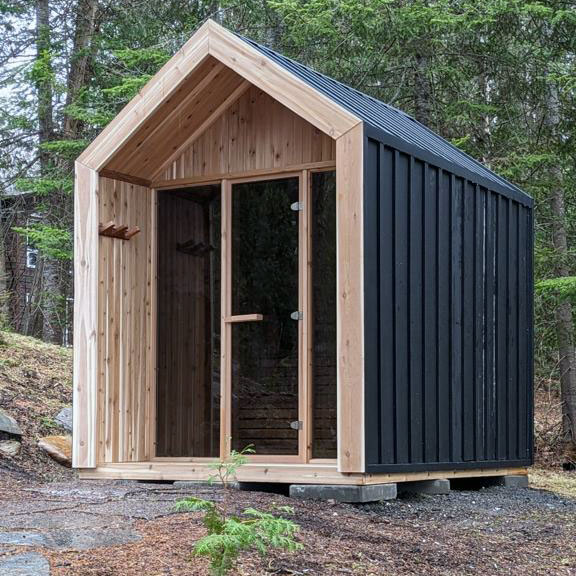Why Design Matters
I recently had the privilege of staying in a very nice Airbnb in a city high-rise. The building had a beautifully landscaped rooftop garden, pool, hot tub, and (to my joy) a sauna!
However, my hopes for the sauna portion of that experience evaporated rapidly when I tried to use the sauna. I’ll explain in the following bullet-points the design flaws that turned what could have been a stellar experience into a mediocre one. What’s frustrating is that the issue wasn’t money, or availability of materials, etc., it was simply a lack of understanding and planning.
- Heaters: The heart of every good sauna is a good heater. As you can see here, the sauna had two heaters. Admittedly, we didn’t turn one of them on because the fan inside was rattling and we didn’t dare use it.
- These heaters have a few stones on top for decorative purposes, but don’t get warm enough to produce steam (and I’m sure throwing water on is strictly prohibited since it would harm the heater).
- A proper sauna heater would contain a large mass of very hot stones and be able to provide steam as needed to carry the warmth of the sauna to your body. A traditional sauna heater is made to be used with water.
- Bench Height: The floor in this sauna was lowered from the door, so it gave at least an 8′ ceiling height. This would be workable, except the benches were only two levels off the floor. The result was that the top bench was at the top of the heater height. Since most sauna heat is above the heater, this design left all of the hot air way above your head, so I had to stand on the bench to enjoy any significant warmth at all.
- Proper bench height should ideally leave your head 9-12 inches from the ceiling when sitting on the top bench. I would never go more than 18″. This sauna was probably 24″ or more.
- Wood: I’m not sure the exact variety of wood used in the sauna, but I’m quite sure it wasn’t a cedar. This in itself would be acceptable, but they then went ahead and oiled or varnished the wood in the sauna to help it hold up to sauna conditions. We never recommend doing this, as the finish will get hot to the touch, nevermind being likely to off-gas or get soft and sticky when heated.
- A good sauna wood can be left in its raw state and will hold up well to the harsh sauna environment. Leaving the wood unfinished will actually help absorb some of the steam and create a soft, aromatic experience.
- Layout / Use of Space: An improperly designed sauna will leave too much empty space unused by benches or bathing. These extra areas might make the sauna feel ‘spacious’, but only increases the heated space. Wasted space can diminish the sauna experience.
Proper Design Makes All the Difference
Now here is a picture of a properly designed sauna. Design features include:
- Traditional sauna heater capable of use with water and to heat the space up to 190 degrees F.
- Benches are significantly higher than the top of the heater, and ceiling height is low enough to keep the bather in the heat zone.
- High quality western red cedar is left raw for a soft, aromatic, and durable sauna experience.
- Layout is optimized to maximize bench space and not heat unused corners
Proper design allows for the best possible sauna experience!







